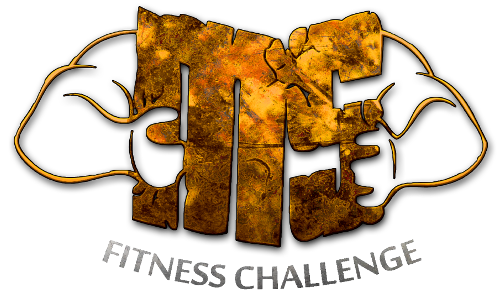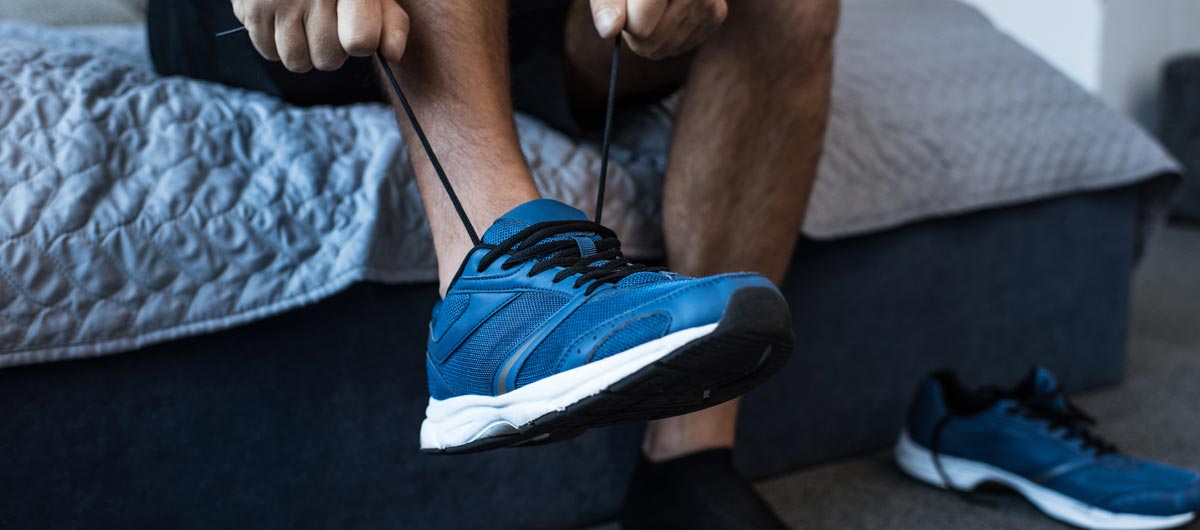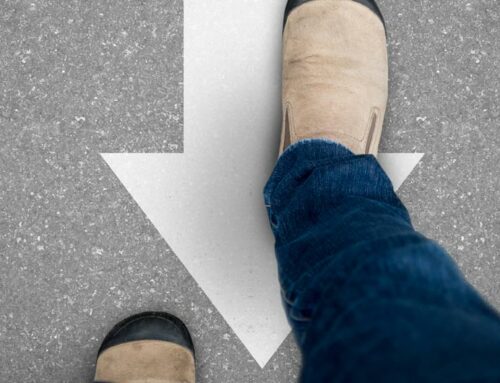Eric Broser has been involved in the health and fitness industry as a trainer, strength/contest prep coach, model, author, magazine columnist, consultant to nutritional supplement companies and gym owner for over twenty-five years. Even though it may seem intimidating to start working out, trainers such as Eric all started where you are today. We recently asked him to compile a few of the most common questions people ask when beginning a workout program. We’re sure many of you have wondered the same things.
What type of training should I do to lose weight?
When it comes to losing weight you need a combination of weight/resistance training and cardiovascular exercise. Many people make the error of performing too much cardio and neglecting weight lifting, thinking that only treadmills, stationary bikes and stair masters are responsible for burning fat – but this is far from true. While “cardio” will certainly help you to burn extra calories, it is weight training that is going to stimulate the metabolism (so that you become a fat burning machine), change the “composition” of your body, and bring about the shape and contours most desire. I suggest at least 3-4 days per week lifting weights and 4-5 of performing cardio – preferably first thing in the morning or right after resistance training.
What type of training should I do to build strength and muscle?
For building strength and muscle you will need a well desiged weight training program that primarily utilizes free weights and compoud (multi-joint) exercises. A 4-day per week program works quite well for most, using a 2 on, 1 off, 2 on, 2 off pattern. This allows you to hit each muscle group hard once per week, while providing you three days for rest and recovery (which is when actual growth takes place). I suggest starting with about four exercises for three sets each for major muscles like back, quads, hamstrings chest and shoulders. For smaller groups like biceps, triceps, traps, abs, forearms and calves you will do well with just three movements for 2-3 sets each. Perform 1-3 warmup sets before each exercise (more are needed earlier in the workout), and then work sets of 13-15, 10-12 and 7-9 reps.
How often do I need to work out?
How often you need to work out depends on your fitness level, goals, and time limitations. The more lofty the goal, the more time you will have to spend going after it. That said, if you have a very demanding job, a family, and/or other important personal responsibilities, you may not be able to spend hours per week working out, and thus will need to be patient when it comes to reaching your goal. To make decent progress you will certainly need to hit the gym at least 3 days per week for an hour at a time. However, as time passes, you will begin to require more time working out in order to see continued progress. I suggest starting out with three gym sessions per week, and adding to your program every month or so.
How much time should I spend in the gym?
Like the previous question, this again depends on how fit you currently are, what goals you have set for yourself and how much time you have to devote to working out. For some people it may be best to schedule three hour-long workouts per week, while others may find it more convenient and beneficial to train 5-6 days per week – but for only 30 minutes. In other words, it is best to think about how many total hours per week you will spend in the gym, and then to decide how best to spread it out. Another important point to consider is quality of time and not just quantity. Someone who is very dedicated and focused to his/her training can often get far more accomplished in just 30 minutes than one who is there for an hour, but constantly distracted by his/her phone, chatting with others, and/or watching rather than doing.
How much rest do I need? (During workouts and in between workouts)
Certain exercises are far more demanding on the body than others, and thus require more rest between sets. For example, a set of 15 reps of BB Squats will not only tax the thighs, glutes, and lower back, but will also have you breathing like a freight train. You may find that you need a good 3-4 minutes before you are ready to get to the next set. On the other hand, performing 15 DB Side Laterals may only require 45-60 seconds of recovery time. Another point to consider is what your primarily goal is, and how weight training is best utilized to reach it. Someone who is in the gym to build massive size and power will want to rest for longer periods in between sets so as to be able to lift maximum weight for maximum reps. When one is looking to burn body fat and perhaps increase endurance, it is best to keep heart rate elevated and move rather quickly from set to set, even if weights utilized are lighter. As for time in between workouts, you may find that as a beginner, that a full day of rest is needed in between weight training sessions. However, as you progress and become more resilient, it is possible to train for days without a break, just as long as you never work the same muscles two days in a row. Cardio can be done daily.
When/why should I start a supplement regimen? (if at all)
In the beginning of your health and fitness journey, the main focus should be on implementing an intelligent/efficient workout regimen and a healthy/balanced nutrition program. Anyone who tells you to immediately jump on all sorts of sports supplements is either misinformed or trying to make a buck (well, lots of them). After spending 8-12 solid weeks in the gym, working hard and consistently, while carefully following a sound diet, it is then appropriate to think about adding supplements into the mix.
Is there really a 30- to 60-minute window to consume protein post-workout? Why?
It is actually true that within the first hour after working out intensely with weights, the body is in a special metabolic state whereby protein and carbohydrates wlll be (extraordinarily) partitioned toward muscles, and away from fat cells. This is because during this period, insulin sensitivity is extremely high, which means amino acids and carbs will very readily be absorbed, assimilated and stored directly into damaged muscle cells. This allows for repair, recovery and recuperation to start immediately, and over time will result in far better results than eating your post workout meal outside of this anabolic window.
I’m severely out of shape. Is there anything it isn’t safe for me to do?
To be honest, while it is likely safe for you to begin a light workout program, preferably under the care of an experienced and educated personal trainer, it would be best for you to consult with your physician before even stepping in a gym. Getting the green light from your doc will give you peace of mind and keep you from needlessly causing yourself harm, illness or injury, especially when you are finally taking steps to improve your health and wellness.
Do you recommend any non-workout activities to get fit? (Hiking, dancing, biking, etc.)
Absolutely, yes. Outside activities are especially great when it comes to getting in your cardiovascular training, as it is far more enjoyable to hike, dance, bike, run stairs or swim than to walk on a treadmill for every session.
How do I know my training is working? (what sort of performance measures to look out for: measuring bodyfat, heart rate, weight, waist/hip/thigh measurements?)
Carefully tracking your progress is extremely important when embarking on any kind of physical fitness program. If possible, it is a good idea to meet with a coach/trainer every 2-4 weeks to have your weight, body fat and complete measurements taken. You can take it a step further by having regular blood tests via your primary physician if you are trying to regulate general health measures like total cholesterol, ratio of LDL to HDL, triglycerides and blood pressure. Oddly enough, a very good indicator of progress is by feeling how your clothes fit. Obviously if you are looking to get bigger and more muscular, you know you are headed in the right direction if your shirts are fitting tighter in the arms, chest, and through the back. The scale is not always a tell tale sign of whether your program is yeliding results, since it is very possible for women to drop several sizes without losing a single pound! Always remember that muscle takes up far less space than fat.
What do I do when I hit a plateau?
When stagnation sets in it is time to look carefully at your overall program and decide what changes need to be made in order to kickstart progress once again. Sometimes it is a case of simply adding in more work and/or tweaking the diet by adding or subtracting calories (depending on the goal). Other times you have to ask yourself if you are truly giving it 100% every day in the gym. Simply showing up is not going to get the job done – you need to focus, concentrate and give your all to every set and rep. Another possibility is that your body and mind have adapted to the exercises and types of cardio you have been doing and need a change. Try changing some of your weight training movements, switching to different cardio machines, using more or less resistance, or altering rest between sets.
I’m really struggling, how do I stick with it?
This may be the toughest question of all to answer. The desire and will to keep pushing yourself day after day must come from within. While some close to you may lend their support (hopefully), it is still you that must take the journey. You are the one who has to skip the cheat meals, pass on the booze, pump the weights and sweat on the treadmill, bike and stepper. But just like anything in life, few things worth having come easy. And honestly, nothing is more important than your health. That said, a few suggestions I have that may help are: 1) See if you can find a friend, family member, or even another gym goer to work out with you. Its great having a partner. 2) Watch inspirational videos or movies that can help psyche you up to go to the gym. 3) Always wear headphones when working out with your favorite music blaring in your ears. 4) Contemplate how you will feel about quitting. Think about looking back months from now, knowing what you might have accomplished had you stuck with it.







Leave A Comment